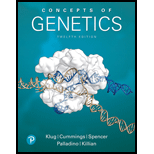
Gender is someone’s conscious and unconscious feelings of belonging to one sex or another. Each year, about 1 in 4500 children are born with a disorder involving sexual development, where the chromosomal, gonadal, or anatomical sex is atypical. Here we will consider two similar cases with different outcomes. In case 1, a 2-year-old child displayed a mosaic chromosome composition of 45, X/46, XY, with one ovary, one testis, a uterus, and ambiguous genitalia. In case 2, a fetus was diagnosed with a mosaic chromosome composition of 46, XX/47, XXY, and after birth, also displayed one testis, one ovary, a uterus, and ambiguous genitalia. The child in case 1 was adopted from an orphanage and raised as a girl. After consultation with the medical team, the parents decided to continue raising the child as a girl and requested surgery that would completely feminize the child. In case 2, the parents decided to forego treatment and let the child make the choice about gender later in life and to remain neutral about the child’s present condition. These cases raise questions about sex determination and the ethics of sex and gender assignment.
Compare and contrast the ethical decisions faced by the parents in both cases 1 and 2. Should parents be allowed to make the decision about the gender of their child? If not, at what age should the child be allowed to make this decision?
Want to see the full answer?
Check out a sample textbook solution
Chapter 7 Solutions
Concepts of Genetics (12th Edition)
- Briefly state the physical meaning of the electrocapillary equation (Lippman equation).arrow_forwardExplain in a small summary how: What genetic information can be obtained from a Punnet square? What genetic information cannot be determined from a Punnet square? Why might a Punnet Square be beneficial to understanding genetics/inheritance?arrow_forwardIn a small summary write down:arrow_forward
- Not part of a graded assignment, from a past midtermarrow_forwardNoggin mutation: The mouse, one of the phenotypic consequences of Noggin mutationis mispatterning of the spinal cord, in the posterior region of the mouse embryo, suchthat in the hindlimb region the more ventral fates are lost, and the dorsal Pax3 domain isexpanded. (this experiment is not in the lectures).a. Hypothesis for why: What would be your hypothesis for why the ventral fatesare lost and dorsal fates expanded? Include in your answer the words notochord,BMP, SHH and either (or both of) surface ectoderm or lateral plate mesodermarrow_forwardNot part of a graded assignment, from a past midtermarrow_forward
 Human Physiology: From Cells to Systems (MindTap ...BiologyISBN:9781285866932Author:Lauralee SherwoodPublisher:Cengage Learning
Human Physiology: From Cells to Systems (MindTap ...BiologyISBN:9781285866932Author:Lauralee SherwoodPublisher:Cengage Learning Human Biology (MindTap Course List)BiologyISBN:9781305112100Author:Cecie Starr, Beverly McMillanPublisher:Cengage Learning
Human Biology (MindTap Course List)BiologyISBN:9781305112100Author:Cecie Starr, Beverly McMillanPublisher:Cengage Learning Biology: The Unity and Diversity of Life (MindTap...BiologyISBN:9781305073951Author:Cecie Starr, Ralph Taggart, Christine Evers, Lisa StarrPublisher:Cengage Learning
Biology: The Unity and Diversity of Life (MindTap...BiologyISBN:9781305073951Author:Cecie Starr, Ralph Taggart, Christine Evers, Lisa StarrPublisher:Cengage Learning Biology Today and Tomorrow without Physiology (Mi...BiologyISBN:9781305117396Author:Cecie Starr, Christine Evers, Lisa StarrPublisher:Cengage Learning
Biology Today and Tomorrow without Physiology (Mi...BiologyISBN:9781305117396Author:Cecie Starr, Christine Evers, Lisa StarrPublisher:Cengage Learning Human Heredity: Principles and Issues (MindTap Co...BiologyISBN:9781305251052Author:Michael CummingsPublisher:Cengage Learning
Human Heredity: Principles and Issues (MindTap Co...BiologyISBN:9781305251052Author:Michael CummingsPublisher:Cengage Learning





